It’s not really a mystery why we Pinoys love Japanese cuisine. As this article puts it, “Filipinos have a natural palate for the sweet and savoury, so it comes as no surprise that Japanese cuisine is popular here.”
And as F&B Report, well, reports, Japanese restaurants are high in demand here in the Philippines. So with many Japanese restaurants and different options for Japanese foods, what are the ones to try for beginners or for those who are about to experience Japanese cuisine for the first time?
Well, keep reading for our tasty recommendations. All of these on the list are best to eat in Japan itself, in our opinion, but the ones you can get here are pretty darn good!
Japanese Food You Must Try: Sushi and Sashimi
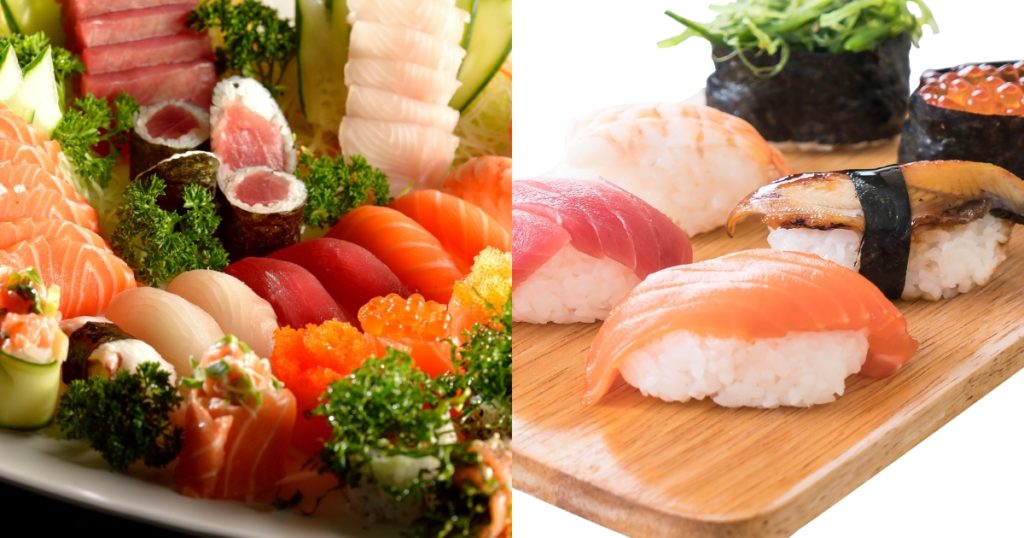
Sushi, the epitome of elegance and precision, is a must-try in the world of Japanese cuisine. Each piece is a work of art, combining vinegared rice with fresh fish or vegetables delicately wrapped in seaweed. The explosion of flavors in every bite will leave you craving for more, no matter the type of sushi you try.
Not far off from sushi is sashimi, another traditional Japanese dish consisting of thinly sliced, fresh, raw seafood. It is typically served without any cooking or seasoning, allowing the natural flavors and textures of the ingredients to shine. Do yourself a favor and look for both every time you step foot in sushi restaurants.
You can also make your own sushi in your own home. Click here to enroll in our Modern Sushi and Maki Class!
Japanese Food You Must Try: Ramen
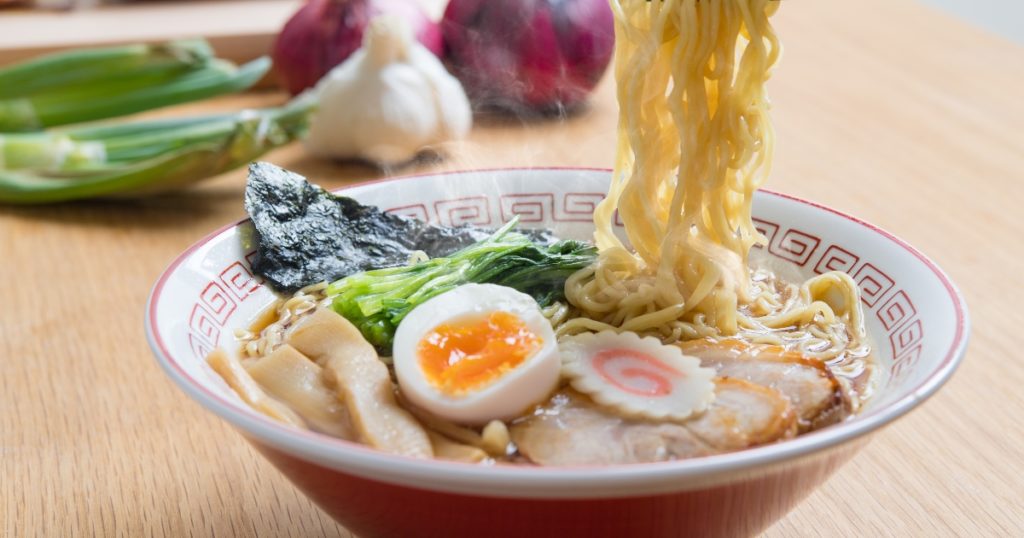
When it comes to Japanese comfort food, there’s nothing better than a bowl of ramen. A steaming bowl of rich broth, noodles, and toppings, such as thin slices of pork or beef, spring onions, and marinated eggs, is one of the things you must try in Japan or in Japanese cuisine. As you slurp the ramen noodle soup, you’ll feel a sense of warmth and contentment wash over you.
It’s a popular Japanese dish for a good reason! You’ll likely want multiple bowls of ramen in one go. And if that’s a yes, it’s probably best for you to enroll in our Ramen Made Easy class! You can make five different kinds at home, just like the ramen in Japan—sounds pretty delicious, agree?
Japanese Food You Should Try: Tempura
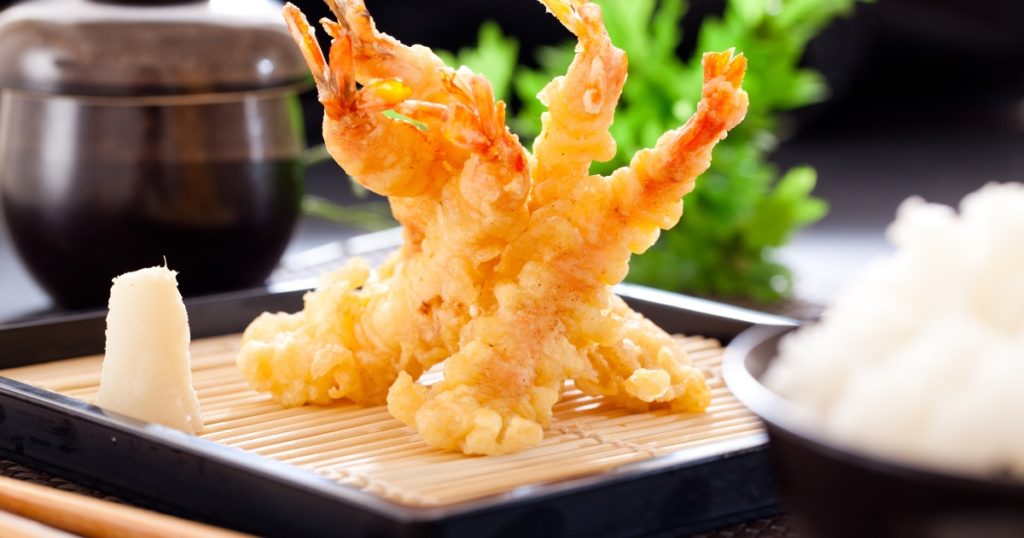
Go to any buffet here in the Philippines that offers tempura, and you’ll find, more often than not, a line for Tempura. That’s how popular this deep fried dish is! In fact, we think that if a tempura restaurant opened here which serves nothing BUT tempura, it would sell out pretty fast!
Well, tempura’s light and crispy batter IS a delightful contrast to the shrimp inside—and don’t forget the dipping sauce! And, of course, since we’re Pinoy, we’d enjoy this with a bowl of rice… or two!
Takoyaki: A Must-Try Dish
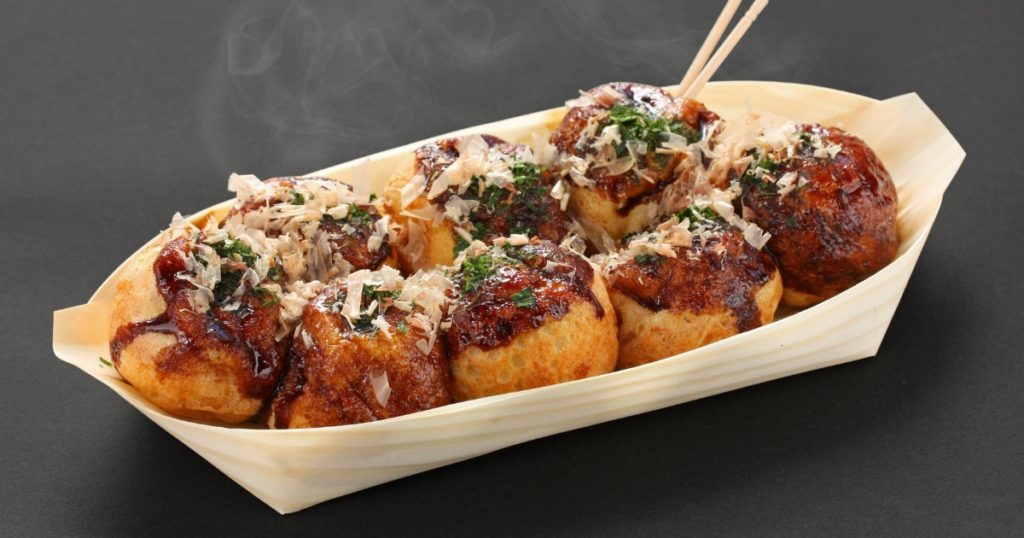
Takoyaki is a popular street food that comes from Osaka. This makes the list because it’s a street food that contains seafood (specifically octopus) and vegetables like green onions and pickled ginger. It’s topped with a special kind of soy sauce and bonito flakes.
Who knew octopus could be made into street food and be so delicious?
You know something else that’s cool? When takoyaki is made hot and fresh, you can see the bonito flakes dance!
And despite it being unusual, eating takoyaki is a joy, especially when you experience the combination of the crispiness outside and the softness and gooeyness on the inside. It’s going to be one of those memorable food experiences for sure!
Onigiri: Portable and Delicious
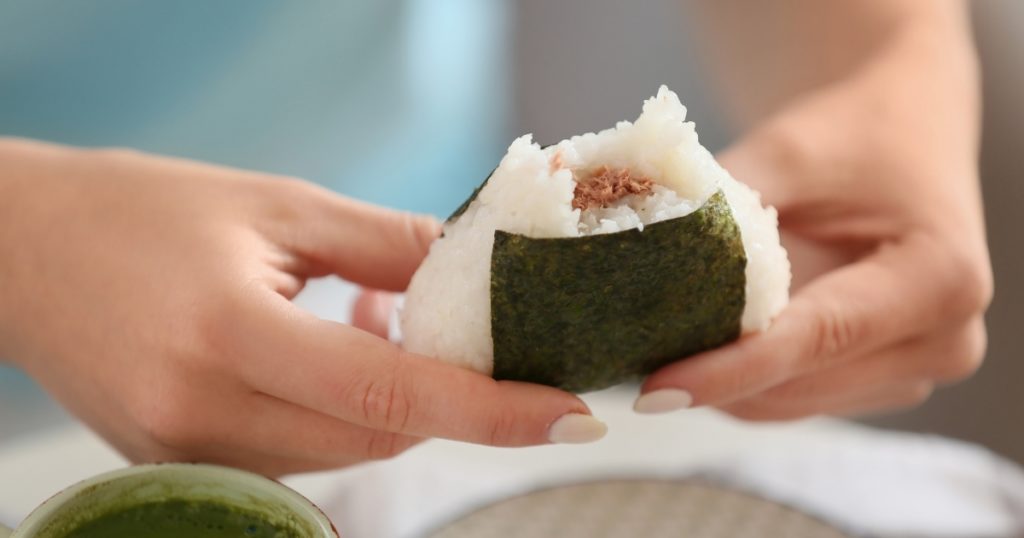
Onigiri, also known as rice balls, are a staple in Japanese cuisine and in Japanese convenience stores. These handheld snacks are made by molding rice into a triangular or cylindrical shape and filling them with ingredients such as pickled plum, salmon, or seasoned seaweed. Onigiri is the perfect snack while you’re on the go, providing a satisfying combination of flavors and textures.
Want to make your own rice ball version? Check out our free Onigiri class!
Japanese Food You Need To Try: Tonkatsu
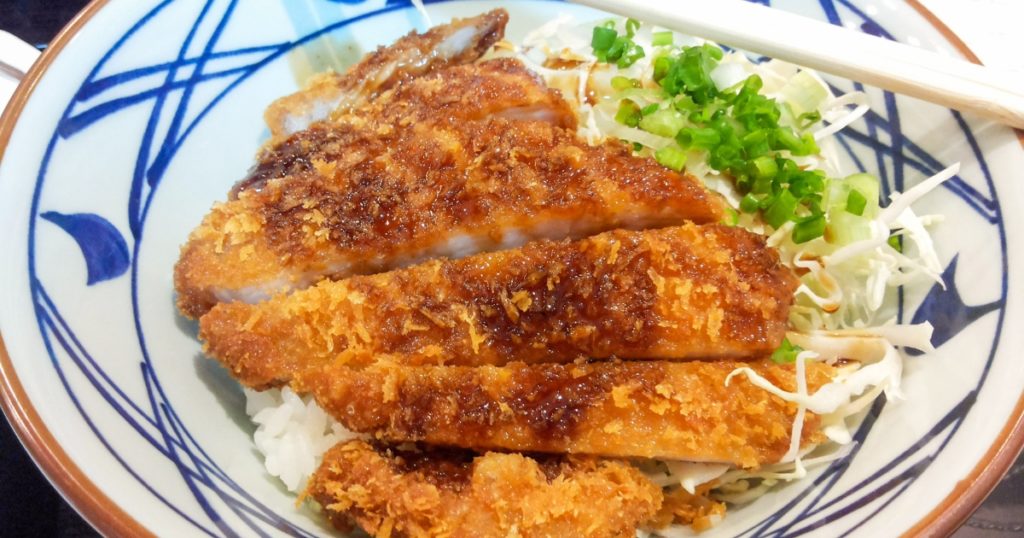
When you say tonkatsu, you’re talking about crispy, breaded, deep-fried pork cutlets. The succulent meat with the breading offers a delightful contrast of textures. It’s served with rice and a tangy dipping sauce, shredded cabbage, and a side of miso soup.
We recommend savoring each pork cutlet you dip into the tonkatsu sauce and eaten with rice. No exaggeration: this is one of the best food in Japan!
Sukiyaki: The Japanese Hot Pot
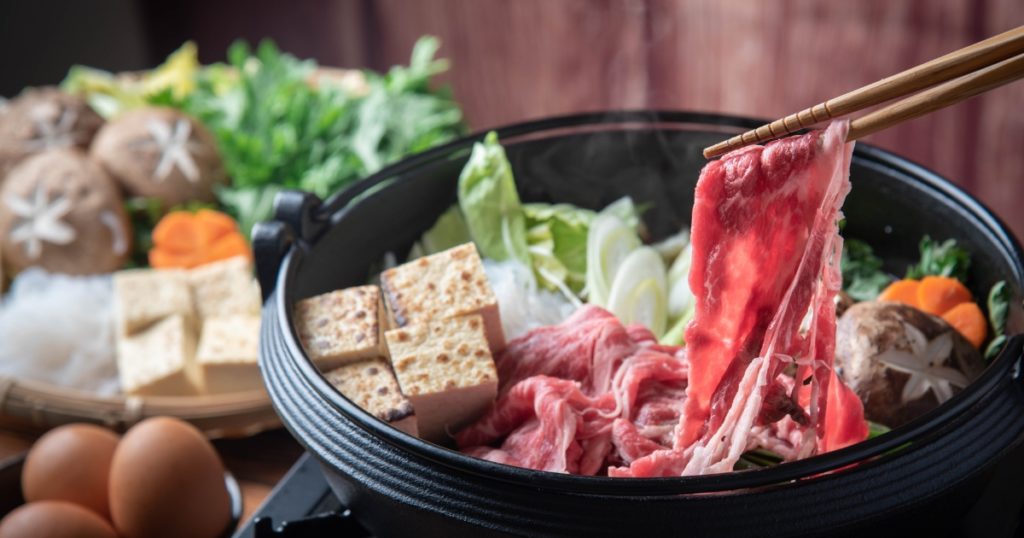
Sukiyaki is a traditional Japanese hot pot dish that, just like ramen, will warm both your body and soul. As of this writing, it’s currently the rainy season in the Philippines, so sukiyaki will be more than appropriate!
Imagine a sweet and savory soy-based broth that contains thinly sliced beef or other meat and vegetables, tofu, and noodles. Sounds good, right? And because the nature of this dish is communal, where the people you’re with gather around the pot, it’s a great bonding experience.
Good traditional Japanese food and people you love—what’s not to like with sukiyaki?
Want a twist on some of these Japanese dishes?
The traditional dishes of Japan are already good by themselves, but did you know you can make them taste even better? At least, that’s if you have the recipes of Chef Him Uy De Baron. Look at how he elevated these famous Japanese foods in his latest cooking class, Easy Japanese!
Discover the next level of these popular Japanese dishes:
- Sukiyaki is a time-honored Japanese hot pot masterpiece. But with this class, you don’t have to do any guesswork in making this. You’ll get the intricate techniques of crafting the perfect Dashi stock, infusing it with tantalizing flavors, and expertly arranging tender beef slices and fresh vegetables in a visually captivating way.
- Do you love tonkatsu? How about cheese? Then you’ll definitely appreciate Chef Him’s Cheesy Mille Feuille, his personal twist on the classic tonkatsu. You’ll get his secrets in achieving flawlessly crispy katsu, as well as how to place melty cheese and aromatic shiso leaves inside so you’ll get a symphony of flavors.
- Chef Him’s Beef Onigiri is not your ordinary kind of rice ball. You’ll get a savory combo of seasoned tender beef on a bed of delicious rice with a robust pepper sauce that gives your onigiri richness and depth. After eating one, you might consider onigiri more than a snack!
And the best part? Whether you’re a beginner or a devoted food enthusiast, this class is tailored to suit your needs and ignite your passion for Japanese cuisine. Unlock the gateway to the authentic flavors of Japan, all within the comfort of your own kitchen—sign up at The Bailiwick Academy today!
Key Takeaways
If you’re looking to explore the world of Japanese cuisine, here’s the scoop: there are a few must-try dishes that will undoubtedly satisfy your taste buds:
- Sushi and sashimi, with their delicate flavors and artful presentation, are an absolute must.
- Ramen, the ultimate comfort food, will warm your soul with its rich broth and delicious toppings.
- Tempura, with its crispy batter and succulent shrimp, is a popular favorite.
- Takoyaki, a delightful street food with octopus, is surprisingly delicious.
- Onigiri, the portable rice balls filled with flavorful ingredients, make for a perfect snack on the go.
- Who can resist the crispy and flavorful tonkatsu served with rice and miso soup?
- Finally, sukiyaki, a communal hot pot dish, is perfect for bonding with loved ones.
And if you’re feeling adventurous and want to take these dishes to the next level, Chef Him Uy De Baron’s cooking class, Easy Japanese, will elevate your culinary experience. So go ahead and dive into the world of Japanese cuisine.
Ultimately, any Japanese food is something you must try—guaranteed!
—
Keep coming back to The Bailiwick Academy blog for more kitchen tips, tricks, and much more!
]]>Wait, do Asian countries eat bread? Absolutely! Asian countries have a strong bread culture, with numerous Asian bakeries across different nations offering a wide variety of delightful Asian bakery breads for everyone to enjoy.
That’s why even if we hold our cherished pan de sal close to our hearts, there’s nothing wrong with expanding our bread-loving horizons. Keep reading to discover twelve enticing creations from different neighboring Asian countries. All these on our Asian bread list are guaranteed a must-try!
A Word About These Asian Bakery Breads
If you’re not familiar with Asian bakery bread, you might be tempted to do what others do: classify all kinds as products of a Chinese bakery. We can’t blame you, since China is probably the most well-known Asian country in the world.
However, doing that wouldn’t be fair to a lot of these products, as China isn’t the only one that produces traditional Asian-style breads. While China certainly boasts a rich baking heritage, it’s important to recognize the diversity and regional specialties of other Asian countries. Asian bakings can be products from Malaysia, Japan, and Taiwan.
Got it? Good. Okay, now… On to the actual breads!
Coffee Bun
A Kopi Roti or a coffee bun is a delectable bun topped with a crispy, coffee-infused crust and delicious butter on the inside, offering a harmonious blend of sweetness and a hint of caffeine. The coffee bun is a 2002 creation of a restaurant in Penang, Malaysia, called Rotiboy.
See? Not all Asian bakery breads are from China!
What makes this a must-taste? Well, consider the fact that there are a lot of shops that offer only this offering. Now, even Western coffee shops offer them!
Maybe because a coffee bun is not only filling but is also a great way to enjoy coffee without actually making one or buying a cup. They’re pretty convenient to eat while you’re on the go, too!
Polo Bun
Originating from Hong Kong, the polo bun is also called pineapple bun, but ironically, it’s not really an Asian pineapple bread. It doesn’t contain any pineapples, after all! These Chinese bakery buns do, however, have a top crust pattern and texture that resembles a pineapple’s skin.
Oh, and the “pineapple skin?” It’s crumbly, buttery, makes a delightful crunch when you bite into it, and encases a very fluffy interior. In short, it’s very satisfying to eat!
Polo or pineapple buns came into popularity thanks to Tai Tung Bakery, a bakery in Yuen Long, Hong Kong that has been making 1,000 buns daily since 1943. Before long, the Hong Kong government declared the polo bun as an intangible cultural heritage.
Although it’s already delicious in its original form, many variants of it have surfaced, such as polo buns filled with pork, butter, and even actual pineapple. Because, well, why not?
Ham and Egg Bun
This Asian egg bread with ham that also originates from Hong Kong is pretty basic: it’s a ham and egg sandwich. But doesn’t it look cool?
It’s not only a visual treat, though. It’s can satiate your hunger and is a great option for breakfast when you’re in a hurry. Two or three of these should fill you up… but at the same time, might leave you wanting more, especially variants that also contain cheese.
They’re that good!
Pizza Bun
Ever had pizza cravings but stopped at ordering one because it’s just too huge for one person? This Asian pizza bread is your answer! It’s smaller and in the form of a bun–great for small servings or for an individual who wants pizza but can’t eat a lot!
Treasure Roll
The origins of the name “treasure roll” aren’t clear. How to best describe this, though? Well, think of it as a Swiss roll bread, the Asian version.
This kind of bread can be made of different fillings such as chocolate, custard, or even pork floss. We guess the treasure is finding what’s inside when you unwrap or bite into it.
Floss Bread
Floss bread is a pastry that came from Taiwan but was popularized by BreadTalk. The visually appealing floss is typically tender pork or beef. Bakers use mayonnaise to stick the floss to the soft and fluffy bread.
It makes for a delicious burst of savory goodness and a rich, umami taste in your mouth!
And if for some reason you’re abstaining from beef or pork, you don’t have to worry. You can still try out this Asian bread bun recipe since there are now other variations that use fish, rabbit, and duck. You’ll have to go to China to experience these, though.
Sausage Roll
Sink your teeth into a savory delight with the sausage roll. This popular pastry enjoyed in Asia, Europe, and Western countries, comes in various variations, featuring different sausages and types of dough.
Whether made with puff pastry or dough, this savory treat is sure to satisfy hunger and become a quick favorite for you, your family, or your customers. Its versatility allows you to customize and tweak it to your liking, making it a versatile option to enjoy or sell. It looks pretty cute, too!
Cheese Bread with Streusel Topping
Cheese bread needs no introduction in the Philippines–we love our cheese bread! But this one is different: it combines the flavors of cheese and the sweet streusel crust!
But what exactly is streusel? Derived from the German term meaning “sprinkled” or “topped,” streusel is a topping made from butter, flour, and sugar. Adding it to the bread will give you a delicate, crumbly texture and a touch of sweetness to pastries, such as the topping in your buko tart.
Now, picture this irresistible streusel adorning your homemade soft and flavorful cheese bread—a delightful combination that truly tastes like a slice of cheesy heaven. YYou’ll experience the perfect balance of sweet and savory in every bite!
Finally, Japan makes an entry into this Asian bakery breads blog article with the AnPan! For such a cute bread, it’s ironically made by a former samurai. It’s a fluffy bun topped with sesame seeds and filled with sweet red bean paste, providing a delightful balance of softness and sweetness.
This sweet Asian bread is a must-try for those with a penchant for Japanese cuisine–eating like the locals if you will. The red bean paste takes some getting used to, though. But hey, if it was good enough for an emperor to have the bread supplied to them on a daily basis back in 1875, it’s more than good enough for you!
Sausage and Veggie Salad Bread
Love bread, meat, and vegetables? Have them all in one delectable bite! This soft bun filled with savory sausages and a refreshing mix of crunchy vegetable salad combines flavors and textures that are both satisfying and nutritious.
It’s a healthier option for snacking as well–can’t go wrong with being healthy, right?
Japanese Cream Pan
And when you finish one piece of this Asian custard bread, experiencing all its delicious richness, you’re definitely going to want seconds or even thirds!
Butter Bread
Simple yet irresistible, Asian butter bread showcases the rich and creamy flavor of butter with a sugary twist. Soft, fluffy and cutely shaped, this bread is perfect for enjoying as is or pairing with your favorite spreads or fillings.
What’s so special about this, you ask? Well, you’ll have to try one to find out. And believe us, it’s worth the try!
Final Thoughts
There are a lot more Asian breads out there, to be honest, but this list is already a good start if you want a unique bread experience. They’ll not only tickle your taste buds but also showcase the creativity and artistry of Asian baking traditions.
And if you’re a bread-loving baker who also wants to expand your food business, trying these Asian bread dishes gives you the opportunity to diversify your offerings and get new customers. With distinct flavors and textures, these breads can become possible hits in your home bakery, your cafe, or even as specialty items for your online food business.
Embrace the flavors and artistry of Asian bakery breads, and watch your culinary venture thrive!
Want to learn how to make Asian bakery breads?
If you’re thinking about putting up your own version of an Asian bread bakery, The Bailiwick Academy has two classes by Chef Jimbo de Pandero that can help you do that! Oh and incidentally, these courses teach you how to make exactly what’s on this list!
Presenting Asian Breads 1:
Where you’ll learn Chef Jimbo’s techniques in making:
- Coffee Buns
- Polo Buns
- Ham and Egg Buns
- Pizza Buns
- Treasure Buns
- Floss Bread
- Cheese Bread; and
- Sausage Buns
And one of his newest classes, Asian Breads 2:
In part two of learn Chef Jimbo’s popular class, he’ll continue with teaching four additional Asian bakery breads:
- AnPan
- Sausage and Veggie Salad Bread
- Japanese Cream Pan
- Butter Bread
In both classes, Chef Jimbo de Panadero will meticulously lead you through every phase of the journey – from combining and kneading the dough to forming and perfecting the baking of the bread. You will gain insights into the distinct ingredients and methods that lend a unique character to Asian breads. And most importantly, you will acquire the confidence to venture into crafting your own delightful renditions.
So what are you waiting for? Sign up at The Bailiwick Academy and start your own Asian bread shop today!
—
Keep coming back to The Bailiwick Academy blog for more kitchen tips, tricks, and much more!
]]>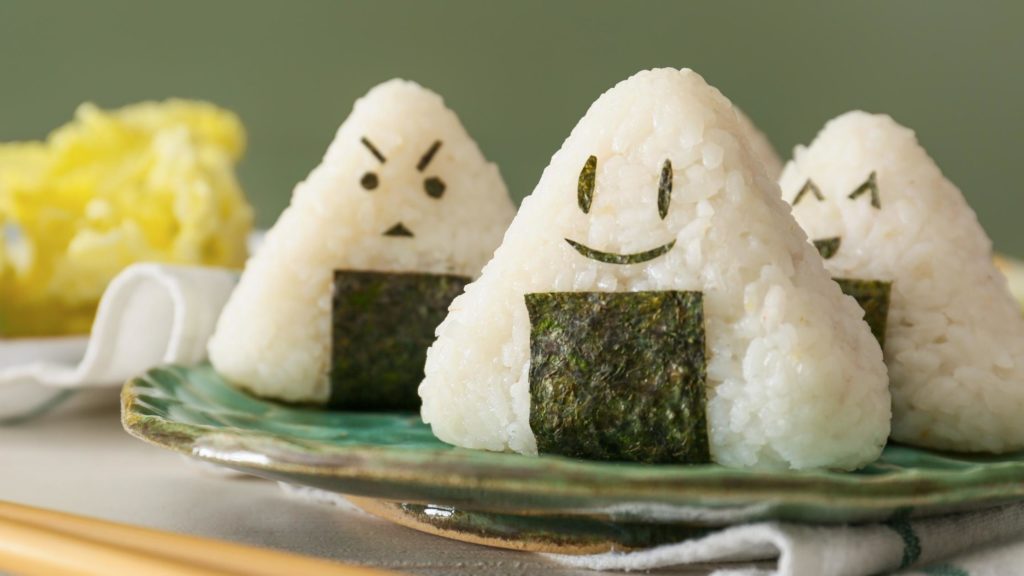
What is onigiri, you ask?
Well, that’s a good question, especially if you’re not familiar with Japanese food. It’s a popular snack in Japan that you can easily get in convenience stores. We say that it’s especially convenient because these rice balls (or rice triangles) wrapped with nori and stuffed with various fillings are easy to unpeel and eat while on the go.
It’s a snack we’re sure Filipinos will appreciate since it’s made of rice. That’s something we’re sure of as even 7-11 here has started selling onigiri.
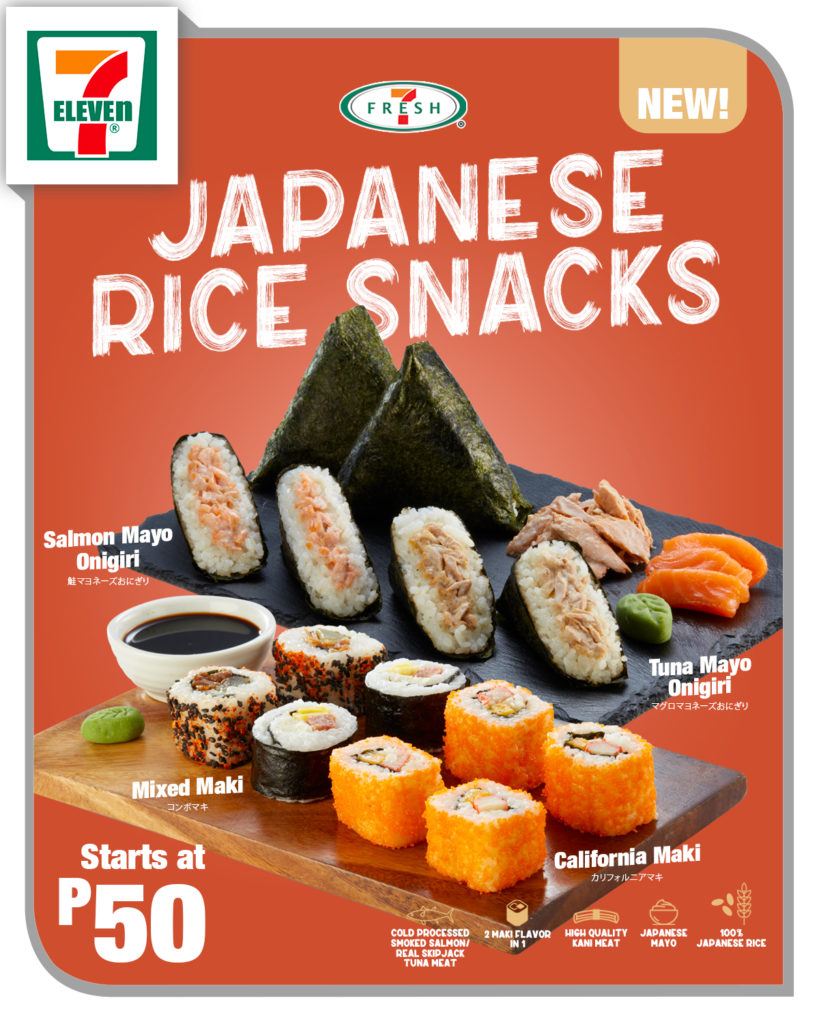
But in order for us to TRULY appreciate something, we need to learn more about it. Do you agree?
If yes, then join us as we take a closer look at onigiri!
Why is it called onigiri?
To be honest, there’s no real answer to where the name comes from. According to the Japanese Products blog, the origin of the word “onigiri” comes from the act of grasping rice.
Another theory is from Matcha Japan. Onigiri was apparently named after two of the creation gods from Japanese mythology.
Whatever the origin, we’re just glad that the Japanese came up with this rice snack. But how did it come about, exactly?
What is the history of onigiri?
According to Wikipedia, there were various records of this rice meal, even before it was called onigiri, such as:
- In the 11th century, people often consumed rice balls during picnics.
- During the seventeenth century, samurai had rice balls wrapped in bamboo sheaths as quick meals.
- During the Nara period, rice was commonly rolled into a small ball so it could be picked up easily.
- In the Heian period, people shaped rice into small rectangular shapes to pile them on plates and easily eat them.
- Cooks during the Kamakura period to the early Edo period started serving onigiri as a quick meal. The onigiri version during this period was simply a ball of rice flavored with salt.
Tokyo Restaurants Guide provides us with additional historical facts about onigiri, such as:
- Carbonized rice was discovered in late Yayoi Period ruins. They were wrapped in bamboo leaves shaped like corn, then boiled or steamed.
- Onigiri started to be eaten as rations or packed lunches during the Sengoku period.
- Onigiri wrapped with nori originated during the Genroku era of the Edo period. It was also during this time that common people started to bring onigiri to firework displays and cherry blossom viewing parties, and where travelers started to seriously bring them as portable food.
- It was in 1885 when onigiri started to be sold as lunches for train passengers in Utsunomiya Station in Tochigi Prefecture.
- In the 1970s, convenience stores started to pop up in Japan. These stores then started selling onigiri with nori. From there, innovation after innovation happened, until the modern onigiri was developed.
Is onigiri the same as sushi?
Now, both are from Japan, and both have rice. Does that mean onigiri is equivalent to sushi?
The answer is no. They do look similar, but they’re different meals.
Onigiri, for instance, doesn’t ever have raw fish. Plus, onigiri is shaped differently from sushi. And while onigiri is an everyday meal in Japan, sushi is something considered special, usually enjoyed on special occasions.
And besides, the origins of sushi are way different from the origins of onigiri.
Check out this very helpful illustration by Onigiri Kororin to further differentiate the two:
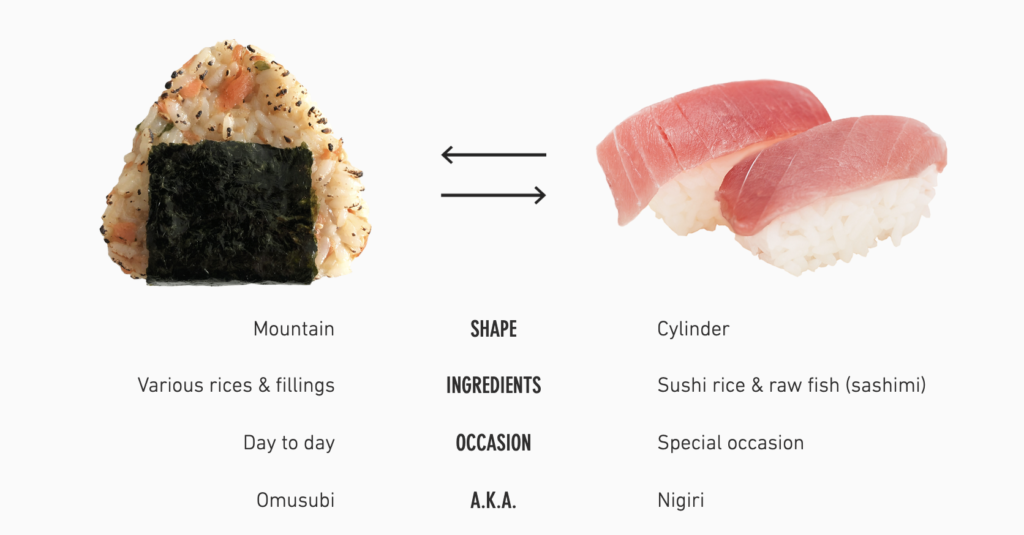
If you do want sushi, though, you can check out our Modern Sushi and Maki class.
What is the difference between omusubi and onigiri?
So you might have been doing your own research, and you find out that onigiri is also being called omusubi. Is there a difference between the two?
Unlike sushi, omusubi can also indeed mean onigiri. Both are rice balls with the same contents. They are simply called by different names depending on which Japanese region you’re in.
We prefer using onigiri, probably because it rolls off our tongues better. How about you?
Is onigiri a snack?
Well, we could say it can count as both a snack and as a real meal. After all, it has rice and various flavors.
We guess it would really be up to you and how you would define a snack and a real meal, right?
Can onigiri be sweet?
Onigiri is usually rice stuffed with savory flavors, but if you’re making your own onigiri, there’s no one to stop you from whatever combination you want to pair with rice, right?
For your reference, though, SoraNews24 does say that there are already sweet onigiri cakes in Japan:
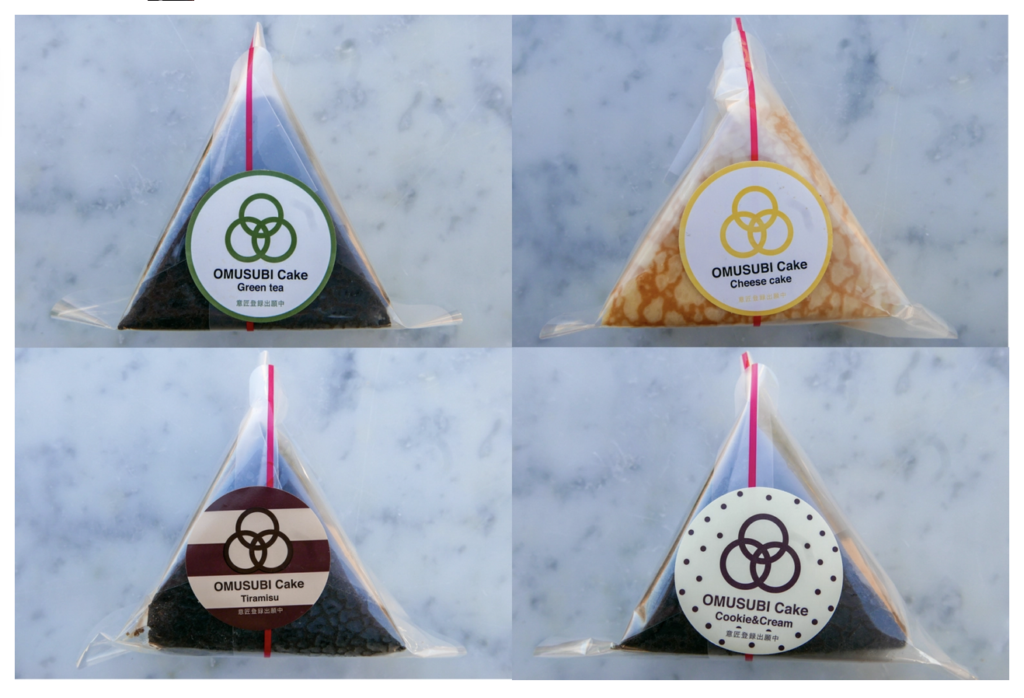
We’d definitely like to try these out, especially if someday, the concept catches on in the Philippines!
What is onigiri made of?
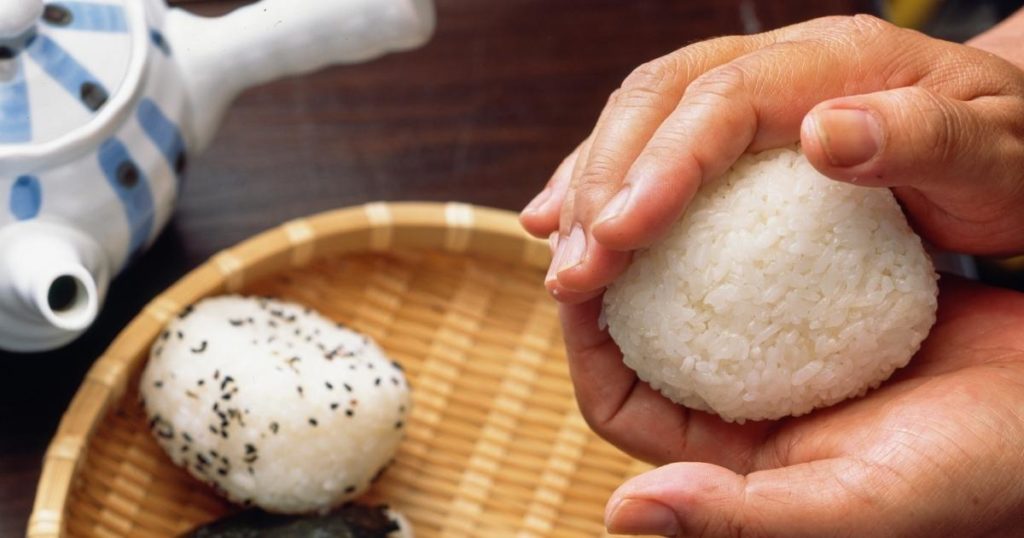
At the very core, onigiri is made up of rice, nori, and any sour or salty ingredient that acts as a natural preservative.
What rice is used for onigiri, you ask? Normally, you would use boiled rice, but there are rice variants that have been used already, such as glutinous rice cooked or steamed with vegetables, cooked rice with preferred ingredients, and even fried rice.
What can onigiri be filled with?
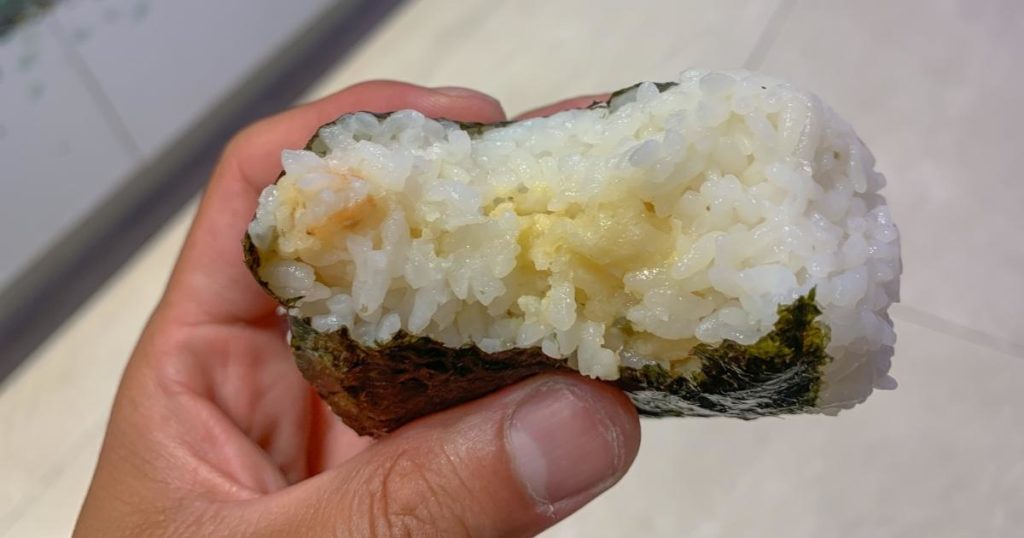
What does onigiri have in it? Well, there are plenty of options:
- Tuna with mayonnaise
- Pickled Japanese plums
- Salmon
- Beef short ribs
- Salmon Roe
- Dried bonito flakes
- Seaweed
- Shrimp with mayonnaise
- Fermented tuna
- Dried mackerel
- Pork
- Miso
- Tempura
Again, if you’re the one making your own rice balls, then you have the freedom to choose what you want to put in it!
Can onigiri be made the night before?
Let’s say you want to enjoy onigiri for tomorrow, but you don’t want to get up early just to make it. Can you make onigiri at night and eat it in the morning?
Well, you can, but you’re going to have to do some extra steps to make sure the rice doesn’t become hard and fall apart. Here are Just Hungry’s tips to ensure fresh-tasting onigiri in the morning:
- For the rice, use sushi rice. The other kinds of rice don’t really stay moist.
- And speaking of rice, make sure you make onigiri with freshly cooked rice, not room-temperature rice. Your onigiri will not stick and will dry out quickly.
- Wrap your rice ball in plastic wrap before placing them in the refrigerator. That way, the moisture is trapped and your onigiri will not dry out.
- To keep the nori crispy, bring it separately, and do not place it in the ref!
What is the shelf life of onigiri?
How long is it good for before you have to throw them out? Well, since they don’t contain preservatives, and rice is perishable, they are good for 18 hours.
Now, if you’re wondering if onigiri can be frozen to make them last longer. The answer is a yes! When you plan to eat them, pop them in the microwave.
It might take you a while to get the right setting, but once you do, your onigiri will taste like they were freshly made.
Is onigiri good?
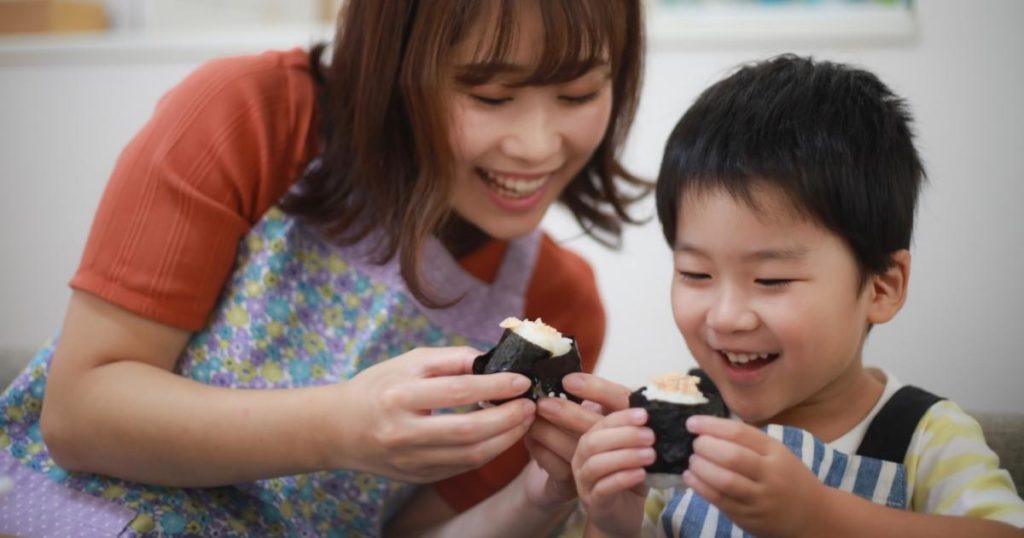
Yes, onigiri is delicious – nothing else needs to be said! Hey, rice plus your filling of choice – what else would you need?
Besides, if its only main selling point is convenience to eat, we’re sure it wouldn’t have lasted as long as it has in Japan!
So our advice is not to delay, and go taste some onigiri today!
Where can I find onigiri near me?
Well, we did mention convenience stores carrying onigiri… But wouldn’t you rather make your own? That way, you have the freedom to choose the rice you want to eat, and the fillings you want to place.
No idea how to do it? Then watch this video featuring Chef Max Nadin! His last free class involved roasted garlic – this time, he’s going to teach you how to make onigiri!
This is a free treat from The Bailiwick Academy! Make sure to watch the whole video to get the techniques down pat.
Find this valuable and super amazing? Then sign up at The Bailiwick Academy for even more valuable and amazing content. It’s worth it, we promise!
Especially if you want to learn how to cook or bake delicious food, AND start a food business.
See you inside!
—
Keep coming back to The Bailiwick Academy blog for more kitchen tips, tricks, and much more!
]]>Is baking really a challenge in Japan?
To answer this question right away, no it’s not. But it’s also not easy. As this article in Japan today says:
“You can find all the basic baking ingredients at your local supermarket: flour, baking powder, sugar, chocolate chips, butter, milk. Most grocery stores have a small baking section, stocked with tiny bags of cake decorations, cake mixes, as well as cupcake tins. Everything is just a notch smaller and more expensive than back home, but it’s there. Reading some packaging can be difficult if you don’t know how to read kanji characters, but here are some of the staples you can easily locate, as they are written in katakana:
Certain ingredients such a powdered sugar, coconut, cocoa, and other types of flours are only available at import shops, but you can most likely find everything (at a cost!), as Japan does baking extremely well.”
In short, quantities are just smaller and more expensive but Japan generally does what you have if you want to bake. Plus, it’s not like there are no bakeries in Japan. According to Tokyoesque.com, today there are more than 10,000 Japanese bakery shops!
So what’s the problem with baking ingredients and why do we need to find their substitutes?
Well, as mentioned above, some ingredients that you might need for specific recipes for The Bailiwick Academy are hard to find.
Take this question of Bailiwicker Minel back in 2019 in the Student Lounge:

Now, as bakers all know, the protein content of the flour you use will matter, depending on what you’re baking. As this Oregon Live article said, the more protein in flour, the more gluten it will produce, which gives baked goods their structure.
(If you want to learn more about the technical aspects of baking, try enrolling in our Bakery Operations class! You’ll learn a practical approach to operating a successful bakery from our instructor’s many years of experience mentoring startups and large-scale businesses. All the fundamentals that you need will be taken up, guaranteed!)
And for this particular recipe that Minel was making (ensaymadas of Chef Joey Prats), she needed flour that had more protein. Otherwise, her ensayamada will not form properly.
And it’s not only particular flour that is hard to find. Interac says that there are plenty of ingredients that are really hard to find, for the simple reason that these items are not popular in Japan. So you’re really going to have to do ingredient substitutions for a lot of recipes.
Baking Ingredients and their substitutes: What to look for
So since this article is about Japan and ingredients there, we asked our Bailiwicker in Japan Maria for her recommendations. According to her, she usually buys from the TBA Shop, so she rarely doesn’t have the ingredients that she needs. But for those that aren’t available in TBA Shop or in Japan, here are her hacks!
Baking Ingredient: Flour
According to Maria, the popular flour is Kameriya.
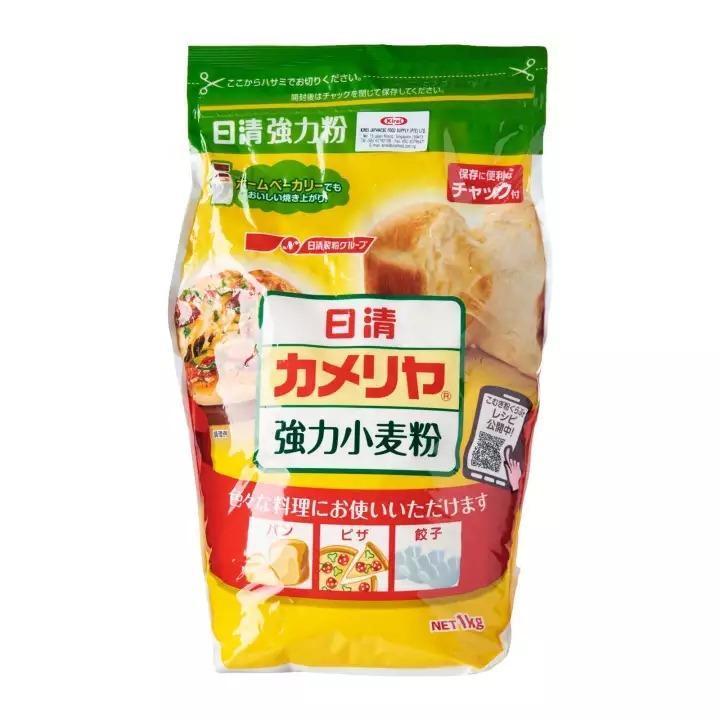
Another is Kumamoto Ken-san if you need pastry or cake flour.
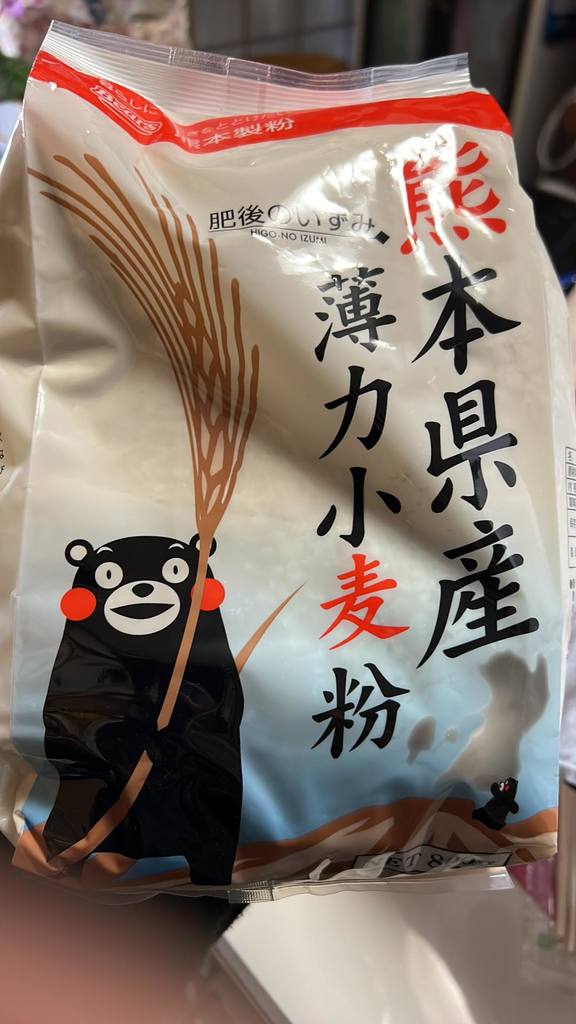
However, she doesn’t buy these is she can help it, because both are expensive.
Substitute Flour
What she does instead is to buy Nisshin Seifun Flour from Amazon.
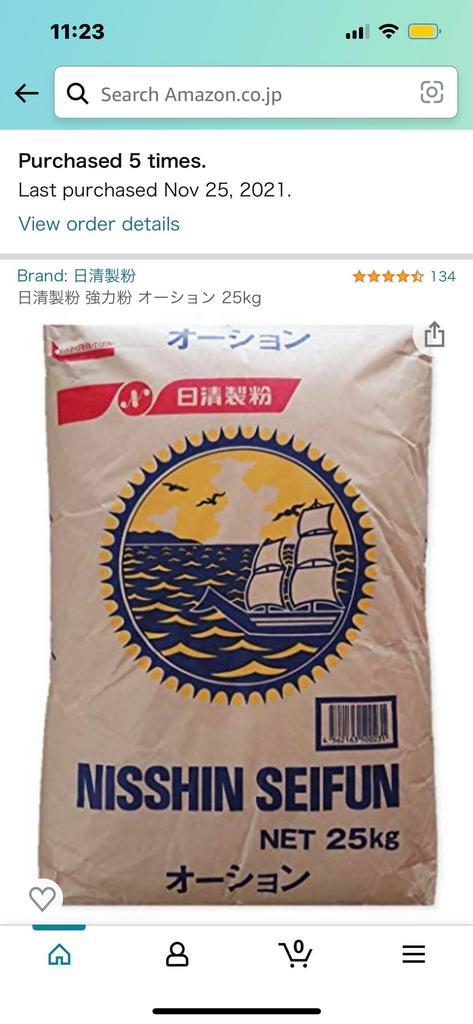
And at 25kg, it’s cheaper in the long run!
Baking Ingredient: Magimix Yellow and Green
A lot of The Bailiwick Academy bread classes require the use of Magimix. In fact, the TBA shop carries both Magimix Yellow and Green.


Of course, both aren’t in stock all the time. And you won’t be able to buy Magimix in Japan.
Substitute Bread Improver
What Maria does is to buy Puratos S500 Plus through Amazon. Problem solved!
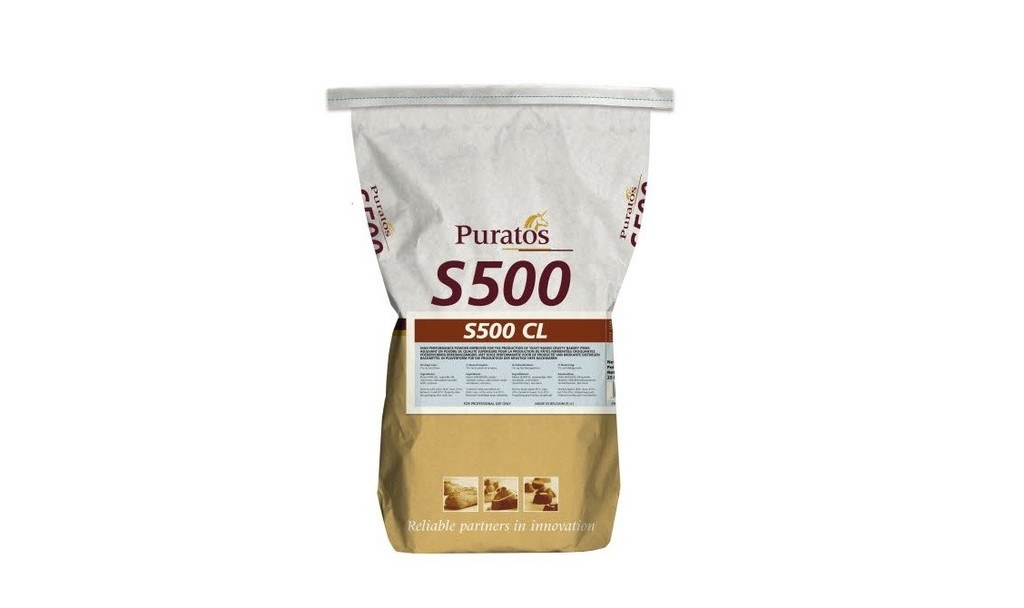
Baking Ingredient: Muscovado
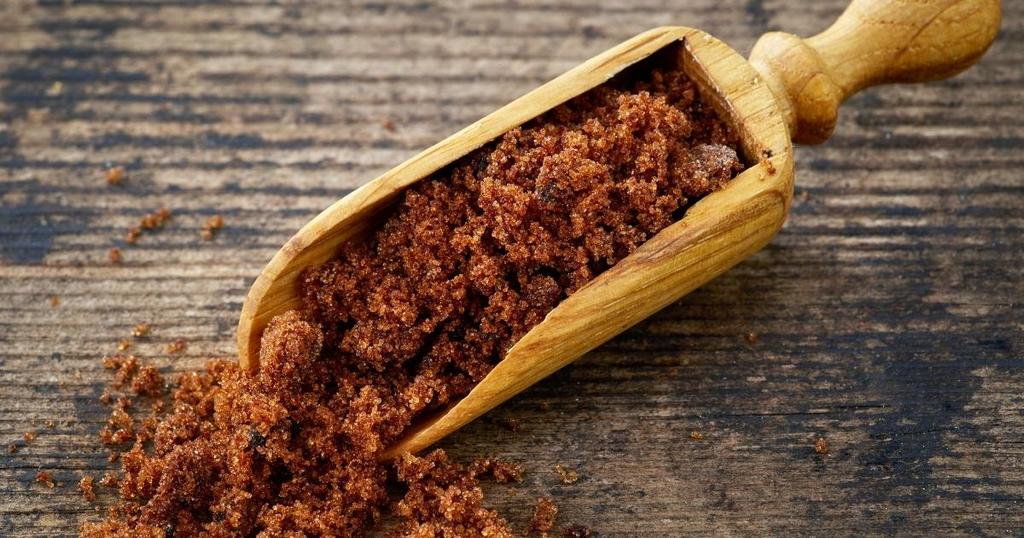
Muscovado sugar is available in Japanese groceries. However, again, it is expensive and has smaller quantities when compared to the sugar you can buy in the Philippines.
Substitute Muscovado
What Maria does instead is to buy coconut sugar from a Nepalese shop in her area to substitute for muscovado. It’s cheaper by almost half!
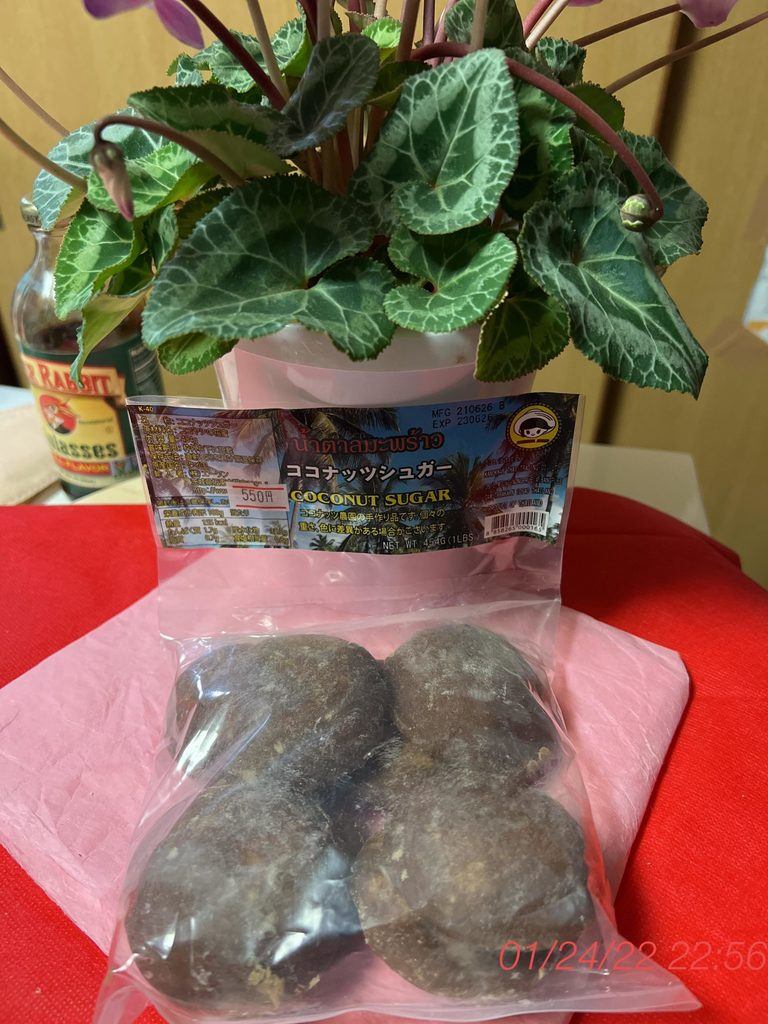
Baking Ingredient: Dark Brown Sugar
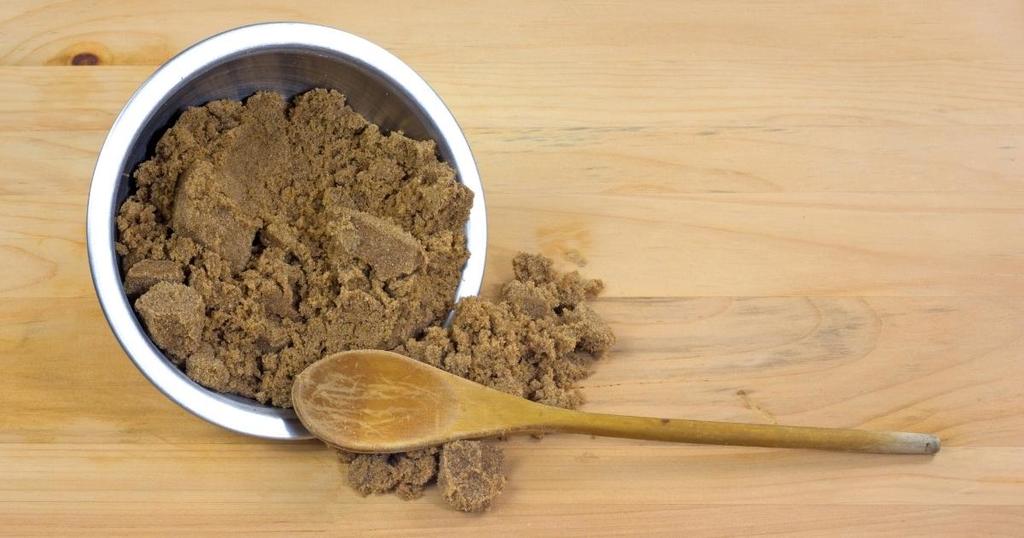
Maria says that for The Bailiwick Academy Gourmet Cookies class, you’ll need dark brown sugar. However, there is no dark brown sugar where she is.
Substitute Dark Brown Sugar
So what Maria does is she buys granulated sugar and then mixes it with Brer Rabbit Molasses. She also bought it from Amazon.
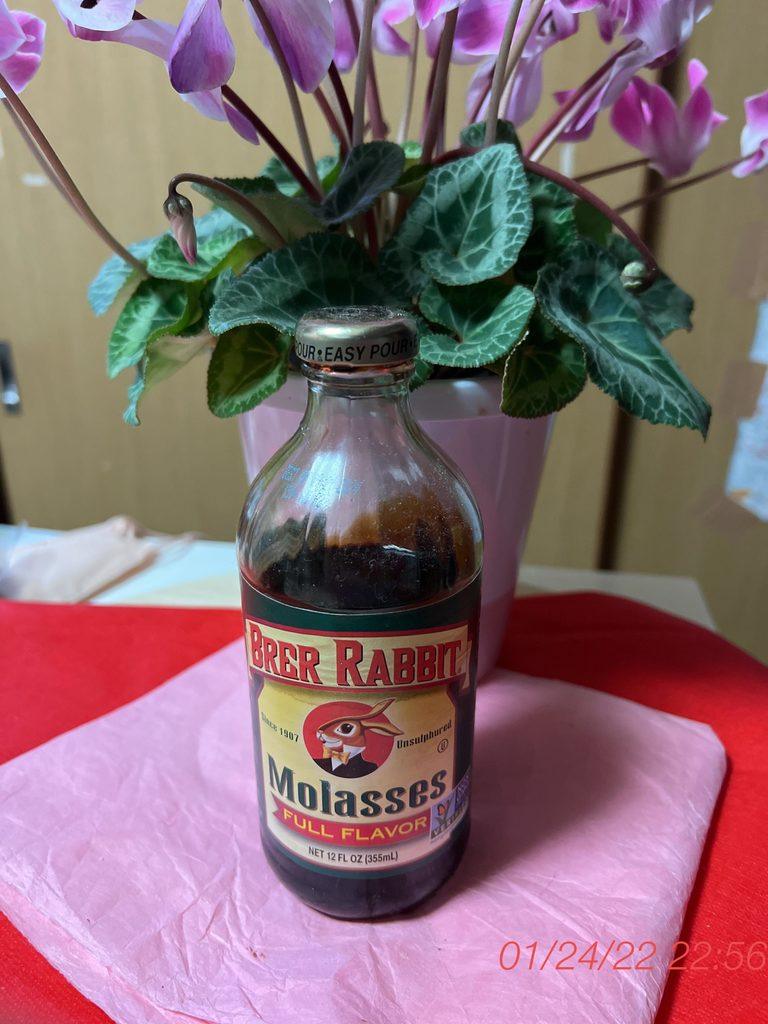
Baking Ingredient: Glucose
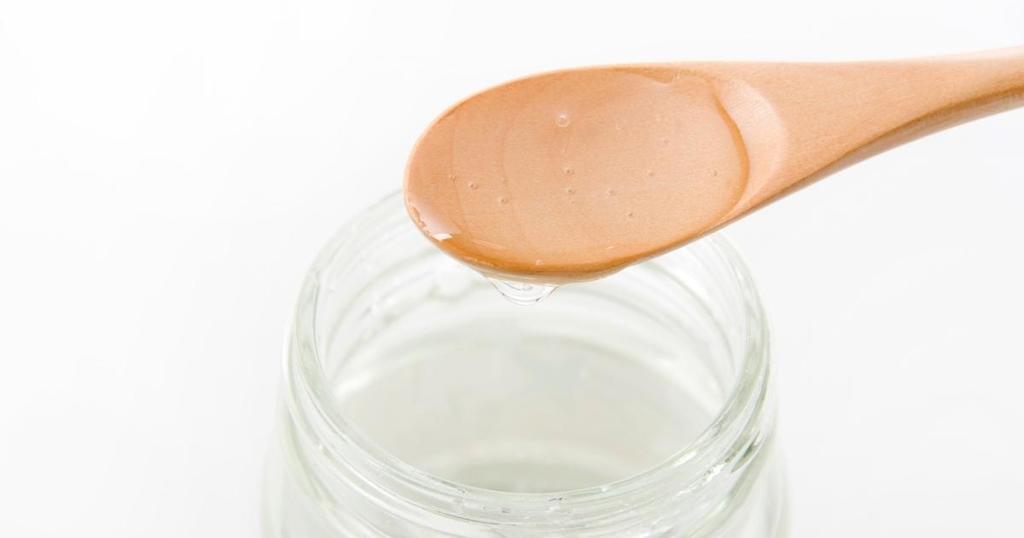
Glucose is an important ingredient for recipes for making caramel, cookies, and brownies, as well as the TBA Class The Art of Edible Flowers. In short, you need glucose a lot!
However… you guessed it, it’s not easy to find in Japan!
Substitute Glucose
Thankfully, Maria has two substitutes for you. One is Origo-tou.
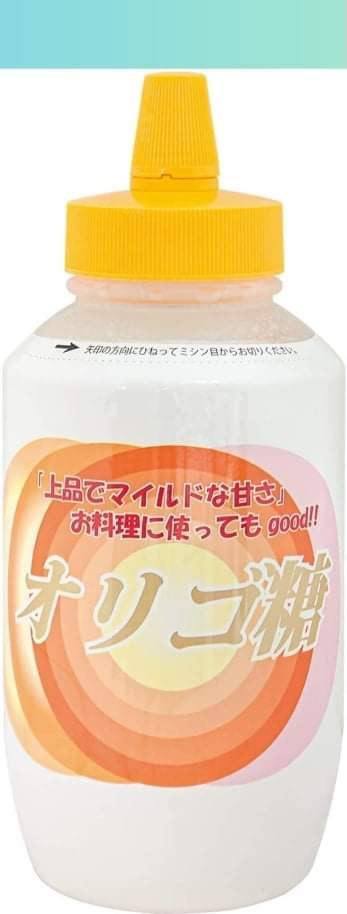
The other is Karo light syrup.
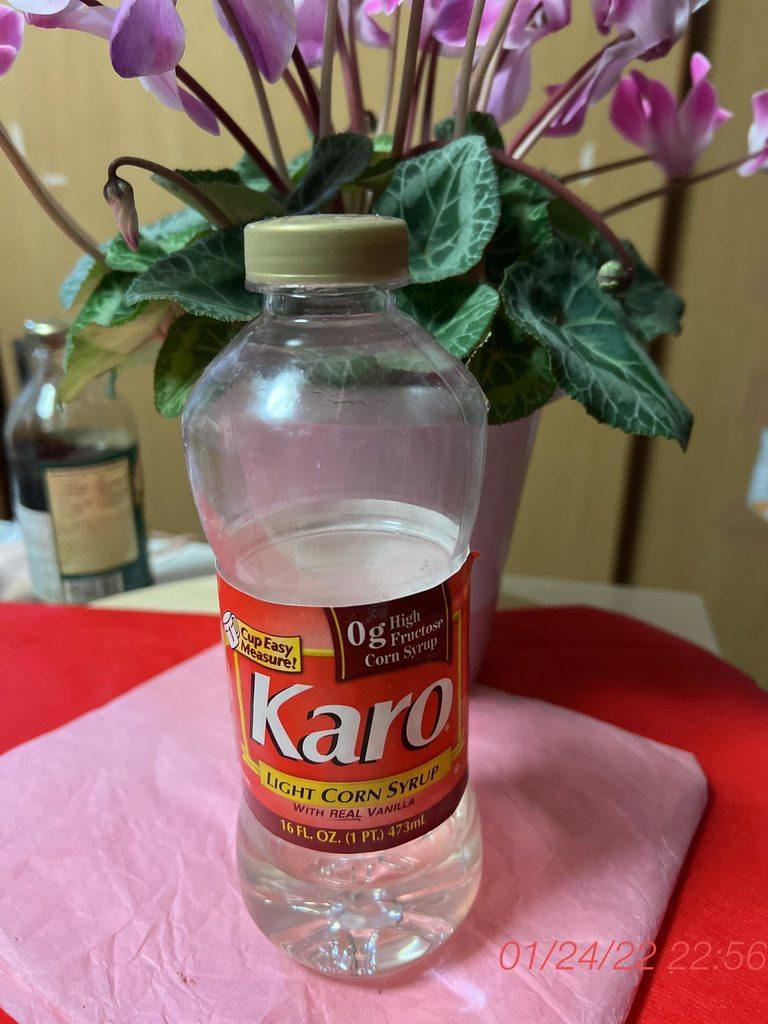
Both are more than okay to replace glucose and are easily bought in Japan.
Baking Ingredient: Penco Tylose
Penco Tylose is that wonderful ingredient that is also used very much in The Art of Edible Flowers, for edible glue, fondant, and gum paste.
Substitute Penco Tylose
She buys CMC from Amazon to substitute for Penco Tylose.
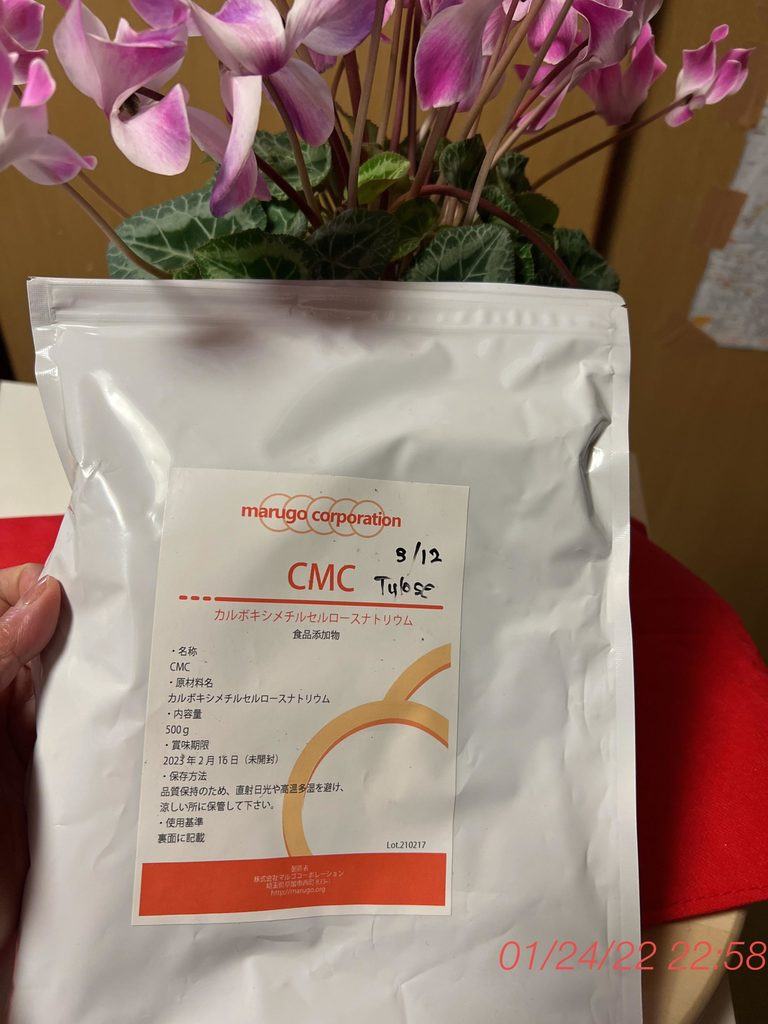
Baking Ingredient: Ube Paste
One last ingredient that Maria says will be hard to find in Japan is ube. TBA has plenty of classes that use ube. But we also know that even in the Philippines, ube can be hard to find, depending on the season.
Thankfully though, Maria can easily buy ube paste from Rakuten or Amazon online. No need to look for substitutes for this one!
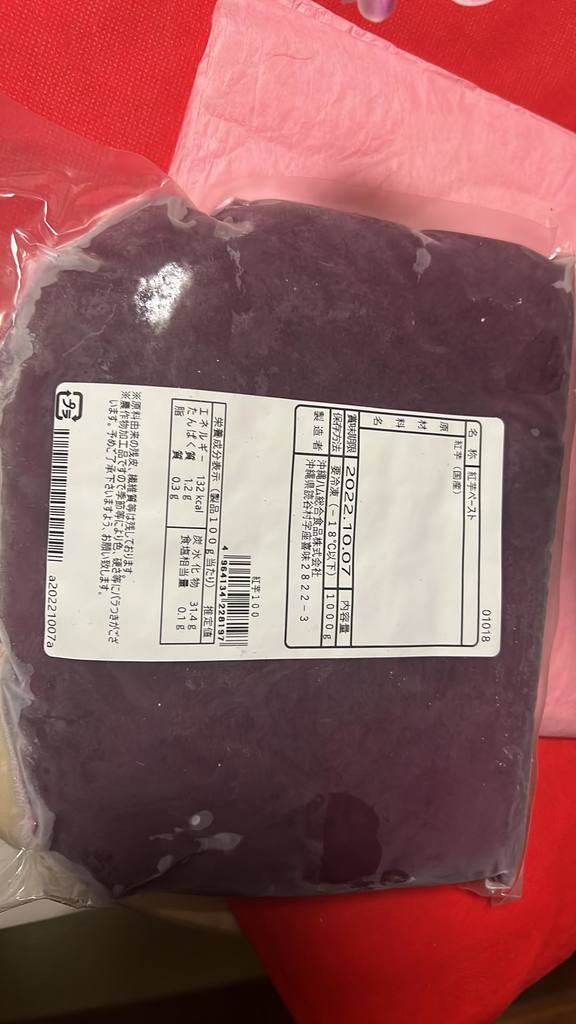
Thank you Ms. Maria for most of these pictures and for your time!
What other baking ingredients and their substitutes would you like to know about?
And there you have it! Folks in Japan, save this list so you won’t have to keep searching for those baking substitutions that you need.
If you live in a different country and you also want to know the ingredient substitutions for your area, tell us in the comments! And if you have other topics that you want to learn more about that you want The Bailiwick Academy to help you out with, reach out to us. We’d be glad to meet your needs!
In the meantime, keep coming back to The Bailiwick Academy blog for more informative articles!
P.S. Before you go, don’t forget to sign up at The Bailiwick Academy for exclusive access to our life-changing classes!
]]>Still on the fence about whether to dive in and join us? Maybe this story will help inspire you. Keep on reading and find out more about our featured baker in Japan, Bailiwicker Maria – and how TBA helped change her life for the better.
Who is this baker in Japan?
Maria’s full name is Ma. Bernadette D. Kawasaki. “I became Maria here because the Japanese couldn’t pronounce my name!” she recalls laughingly. She’s a Filipino Language Counselor in The Aichi Prefecture Board of Education. She currently lives in Nagoya, Japan, with her only daughter.

If you’re wondering what a Filipino Language Counselor does, she goes around elementary and junior high schools within the state every day. She deals with newly-arrived Filipino families in Japan, as well as some other English-speaking nationalities. “I usually give advice about basic Japanese lesson plans and materials to the Japanese teachers,” she says. “Sometimes, I also feel like I’m a school counselor because I talk to children and their parents about their everyday situation, and especially if the kid is in trouble.”
How did this baker in Japan hear about The Bailiwick Academy?
Maria heard about TBA because of a baking group on Facebook. “I have been a member of that group for a few years,” she says. “One time, for some reason, I kept noticing posts of beautiful bread and pastries. I asked my fellow members where they learned to make these delicious-looking treats.”
The members told her to check out The Bailiwick Academy, and the rest was history.
“I immediately looked for TBA online and signed up right away! And when I watched Chef Jimbo de Panadero’s free demos, I got more interested to enroll in his classes and make different kinds of bread!”
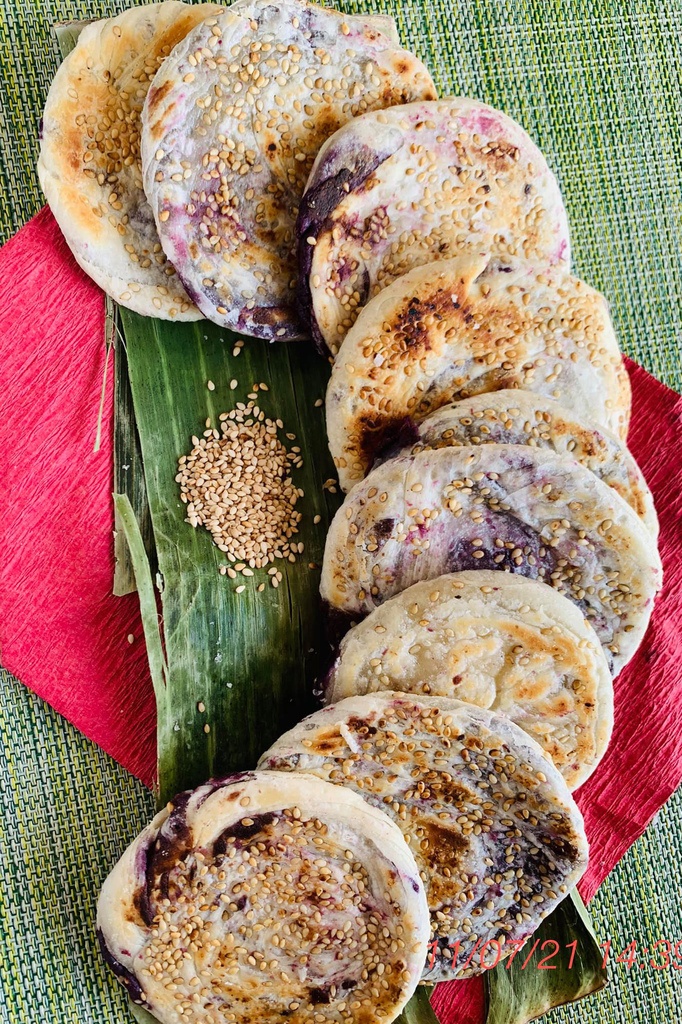
Why did she decide to try and be a baker in Japan?
Maria may have had a job, but as many people know, it is very expensive to live in Japan. And as she was raising her daughter alone, it definitely was not a simple task. “I felt the difficulty when she moved up to senior high school and I enrolled her in a private school,” Maria shares. “My daughter also wanted to attend college, which of course, is expensive.”
Maria herself wasn’t able to finish her studies, but she promised herself that she would do anything to send her daughter to college. “It wasn’t a dream I was able to achieve, but I wanted things to be different for my daughter,” she says.
She shares that she also did various things to earn more money. “I also have to send money to my parents back in the Philippines. Because of that, I used to juggle various jobs, like interpreting and translating. I didn’t take rest days,” she recalls.
It came to a point that even if she loved her job, she got tired of doing the same thing over and over. Maria wanted a new way to earn more money, so she thought about doing what she liked, which was baking. “Of course, I didn’t know if I would succeed, but I had to try!” she exclaims. “And besides, I do not have any special abilities that will help me earn extra from the comfort of my home. So why not try being a baker in Japan?”
Was it easy to start her business after studying the lessons at The Bailiwick Academy?
“It definitely wasn’t easy,” Maria shares. “I had to manage my time, plus we can’t forget the monetary part. The first time I tried pandesal, I failed so many times! So many ingredients were wasted.”
She admits that she also didn’t know anything about flour, or the many ingredients in making bread. “I didn’t know what each ingredient was for, or where to buy flavorings or anything! I literally had zero knowledge about baking,” she recalls. “You wouldn’t call me an instant success baker in Japan at all! Although I have baked cakes for my daughter’s birthday and for other special occasions, I sometimes fail. And I really didn’t know who to ask when I do something wrong with my bakes.”
Thankfully, Maria’s daughter helped encourage her to keep going. “She is my number one fan,” Maria beams, “and is also my top critique when it comes to baking. If she says something I made is good, I sell it. But if she’s not sure, I make some changes in the recipe.”

“She was very instrumental in my first cake order – she was very encouraging. She said, “You can do it, mommy. This is your chance to prove to yourself you are not just good but the best. That is why you bought classes right? To make delicious cakes? TBA will be very proud of you.” Maria shares that her daughter called her cake, “beautiful.”
How did TBA help her to be a baker in Japan?
After Maria first got to watch Chef Jimbo’s ensaymada and pandsalitos free demos, she tried making her own. “I tried the recipes, baked, and posted my outputs in that baking Facebook group, and on my own personal Facebook account,” she says. “After that, a friend messaged me regarding my post. She wanted to buy what I made!”
Maria admits that at first, she wasn’t that confident simply because she was new. “However, I did know that I needed to learn and practice techniques right away, even if I had a good recipe,” she says. “After that, I made a PayPal account so I could buy more classes and learn more. All I wanted to do was study and become better! My first two classes were Chef Jimbo’s Roll Cakes class and Chef Joey’s Artisan Ensaymada class. The rest is history.”
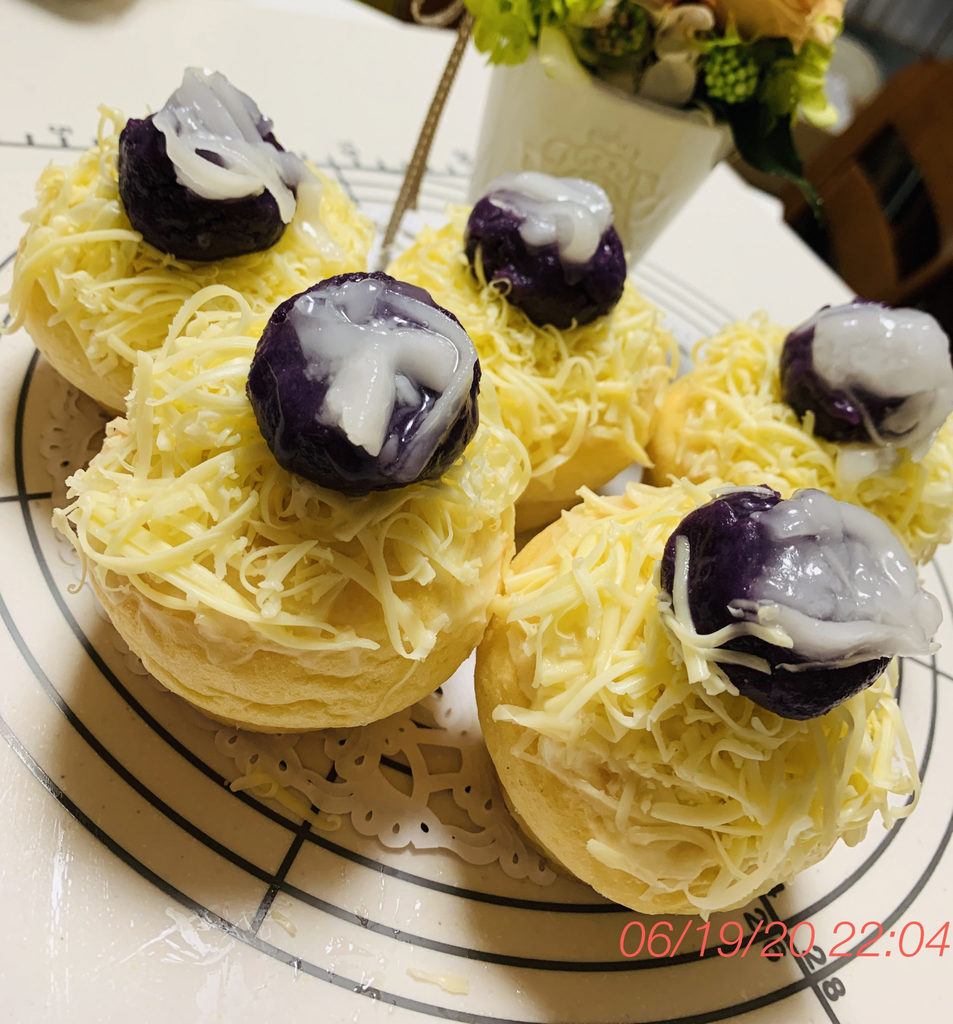
What are her clients’ favorite orders?
Maria may have taken plenty of other classes aside from TBA’s baking classes, but she feels proud that all her bestsellers come from TBA. “Our clients’ favorites are pandesal, Spanish bread, and ube cheese pandesal,” she shares. “They also like salted caramel cake, choco moist mousse cake, egg pies, chocolate crinkles, and gourmet cookies.
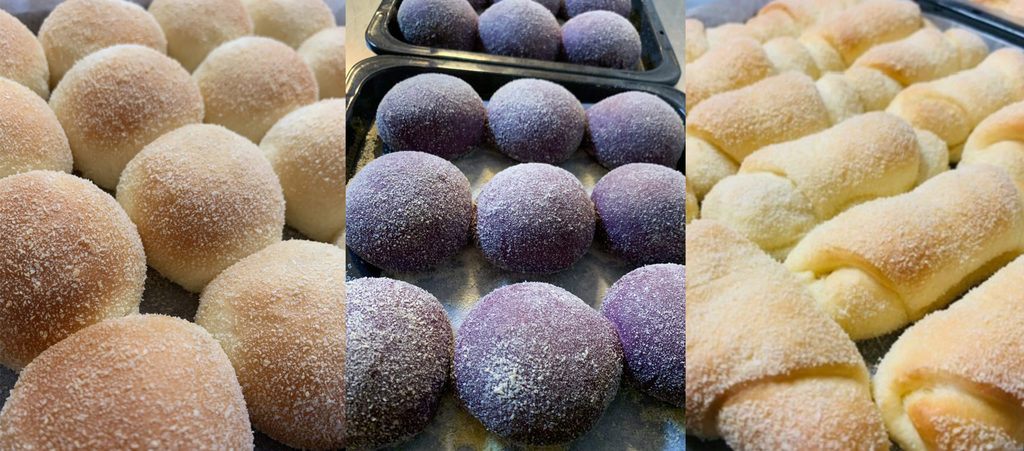
“And because I have work, I only bake on Friday nights, all the way to Saturday morning,” Maria explains. “I deliver also on Saturday to ensure that everything I bake is fresh.” So because she can’t bake all week long, and because sometimes she takes on other weekend work, her baking time is limited.
However, she is pleasantly surprised that her clients love her products so much that they’re willing to wait for her available baking schedules. “Japanese people are hard to please when it comes to desserts, bread, and pastries because they have the best here. But they always give my bread and cakes a thumbs up. My regular clients are always willing to shoulder the courier charge – they love what I make a lot! I think of their smiling faces every time I bake because I want them to feel happy when they eat my baked goodies. And thank God, they really are always happy. I know it because they send me thank-you messages every after delivery.”
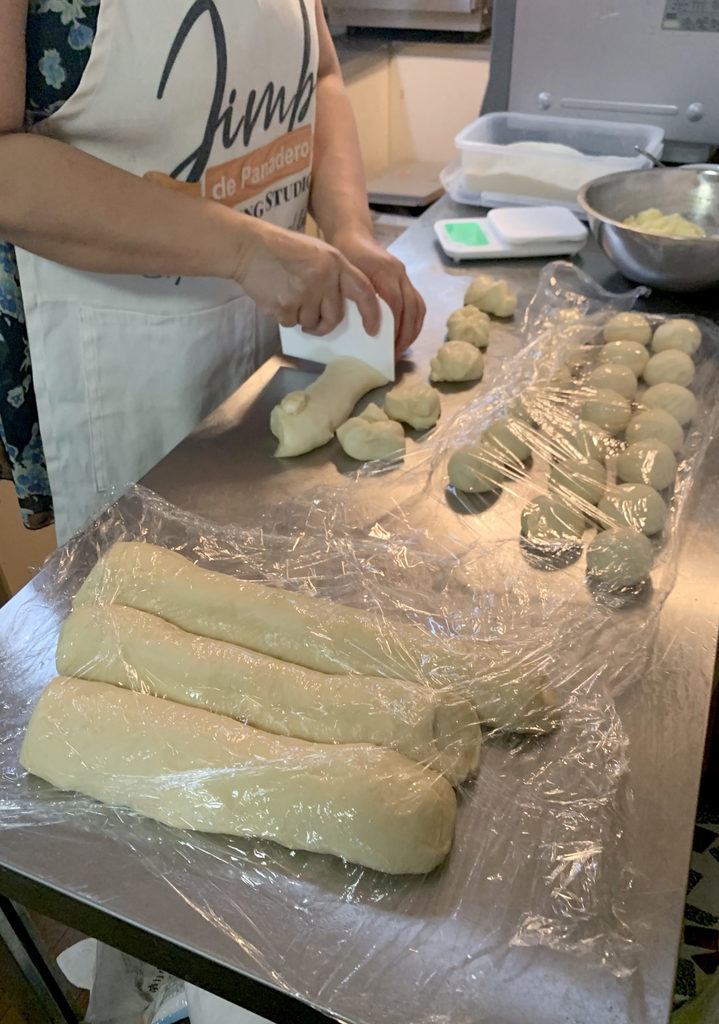
Why did she choose to continue learning with TBA compared to others?
When comparing Bailiwick to other baking and cooking classes, for Maria, TBA, is the best. One thing Maria really loves about TBA is that she can watch classes anytime. “I can watch early in the morning while prepping for work, or listen to the lessons while driving, and even while actually baking!” she marvels. “TBA really fits my lifestyle, because I am always on the go. A full-time employee like me can not afford to go somewhere to study. TBA gave me the opportunity to learn from the comfort of my home.”
She also loves the fact that she can speak to the chefs personally if she has problems with the recipes. “The TBA instructors and chefs respond quickly to every student who encounters problems while baking,” she says. “I remember there was a time I sent Chef Jimbo de Panadero a message showing him the wrinkled and flat ube cheese pandesal at midnight. A real Superman he is, he responded right away. And during some down moments and on days I feel like I am losing my confidence, I listen to Chef Joey’s voice message & words of consolation repeatedly. Plus, the instructors are so kind, sincere, and just so humble.”
More than the quality courses, Maria loves The Bailiwick Academy Student Lounge. “I get to meet new friends who are all so humble and generous with their knowledge,” Maria says. “Every member is so kind and supportive of each other, especially Ms. Grace Parazo! She is so down-to-earth and supportive of even newbies. And I really appreciate the comments of my fellow Bailiwickers when it comes to my creations. They inspire me to strive more and improve myself.”

How did this baker in Japan’s life change after studying TBA lessons?
For Maria, TBA classes really changed her life. “I am very grateful that these classes really helped me and my daughter financially, “she says. “We got through the difficult stages of the COVID-19 pandemic. I also got money to pay for my daughter’s college admission. Although it is still difficult even now, at least I now have extra income from what I love doing.”
Baking has also helped Maria relax. “Since I started purchasing classes, I do not watch TV anymore, which is good, because sometimes, watching TV is depressing,” Maria says ruefully. The lessons became my therapy. I do not really go out, so baking makes me relax and forget life’s everyday woes. And of course, seeing the beautiful goods after making them makes me happy.”
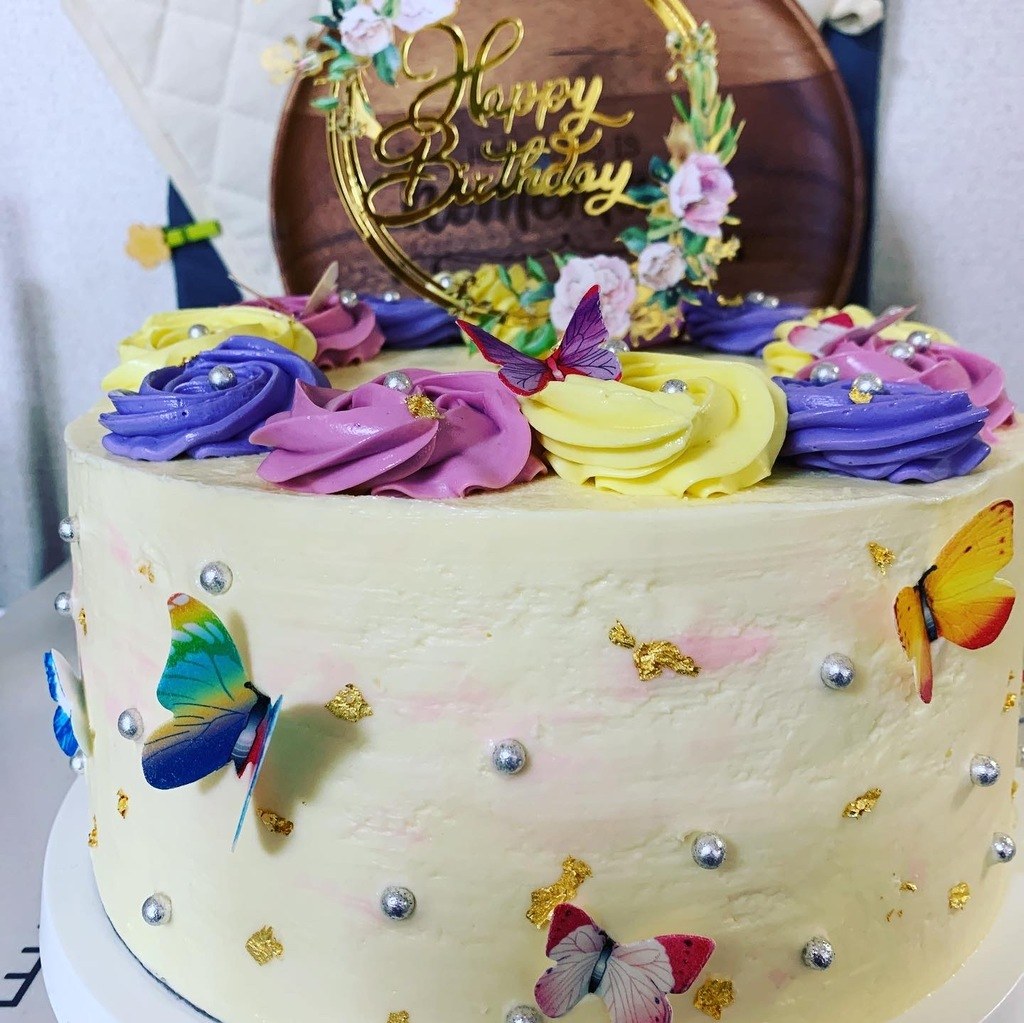
Maria also credits TBA for helping her gain confidence. “I grew up with low self-esteem. But now, I can say that I have changed, especially when I am talking about my products. I can proudly say that my products are not expensive, they’re premium!” she laughs. “I am a true baker – and honestly, finally, call myself a good kind of baker.”
What’s in store for Maria in the future?
For now, Maria plans to just keep earning more for her daughter’s education, and another personal reason: to be able to fly her father to Japan again. “My father has dementia, and it’s getting worse,” Maria explains. “Before he forgets me and my daughter, I want him to visit as many times as possible so we can have more moments together.”
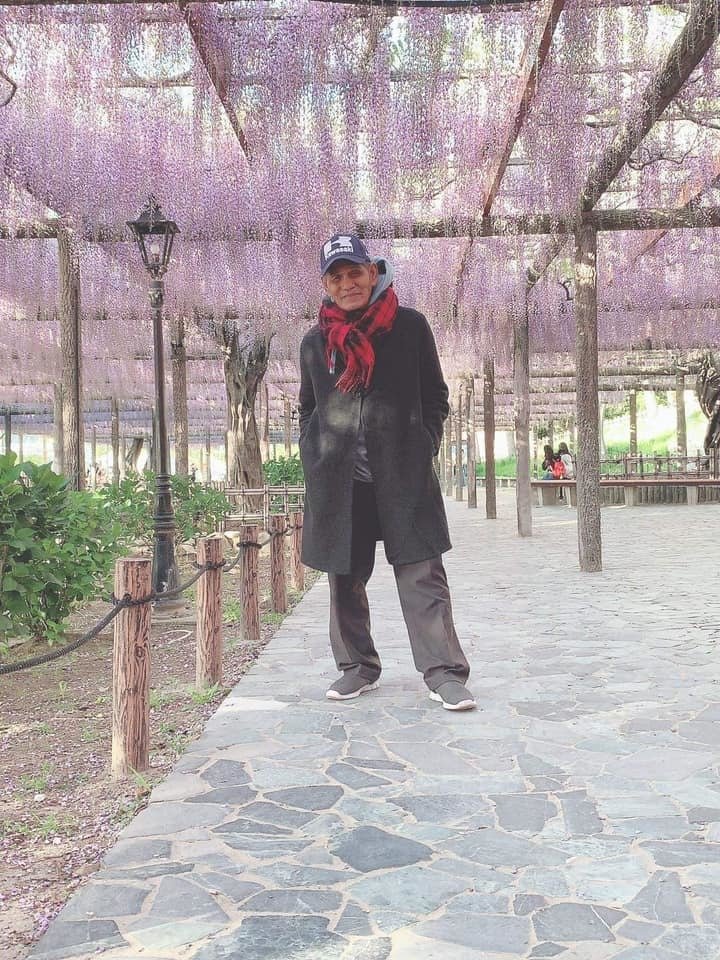
Maria also has the urge to start her own coffee shop soon. “I am looking forward to putting my own coffee shop here someday,” she says. I asked the authorities how to go about it, and learned that I can’t afford to right now. But every time my Japanese friends and fellow Filipinos say, “Invite us to your shop’s opening!” I remind myself it may take time. But it will happen soon.”
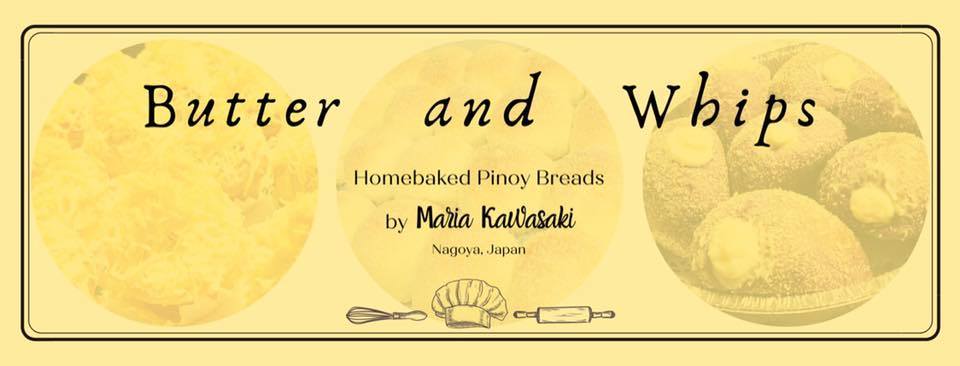
Start 2022 strong – enroll at The Bailiwick Academy now!
Were you inspired by our baker in Japan’s story? Want to enroll now in TBA and start earning from baking and cooking If yes, here’s one last thing Maria had to say about enrolling at The Bailiwick Academy:
“Of course, I will recommend TBA. If someone wants to make themselves better, they should join TBA. Here, you will not only learn but you can also earn and dream huge! Every cent is worth spending. That single cent will bring you to places and will lead you to people that you will love as a family. TBA will help you discover the future, better version of YOU!”
Signing up is free. And when you sign up, you’ll get a Php500 voucher, which you can apply to the first class you enroll in. That’s our little gift for you to thank you for trusting us in changing your life.
What are you waiting for? It’s the New Year, which means it’s just the right time for a new you.
Join us now at The Bailiwick Academy and let’s change your life for the better, TODAY!
*Some answers were changed for brevity and clarity.
]]>